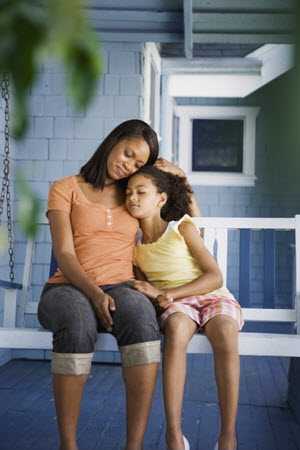SUDEP Information for Parents of Children with Epilepsy
SUDEP in children
Watching a child deal with the day-to-day challenge of epilepsy can be hard for any parent. Researchers have found that Sudden Unexpected Death in Epilepsy (SUDEP) is uncommon among younger aged children, but it is still an important concern for some children. SUDEP refers to deaths in people with epilepsy that are not caused by injury, drowning, or other known causes. Most, but not all, cases of SUDEP occur during or immediately after a seizure. The exact cause is not known, but these are possible factors:1-4
- Breathing. A seizure may cause a person to have pauses in breathing (apnea). If these pauses last too long, they can reduce the oxygen in the blood to a life-threatening level. In addition, during a convulsive seizure a person’s airway sometimes may get covered or obstructed, leading to suffocation.
- Heart rhythm. Rarely, a seizure may cause a dangerous heart rhythm or even heart failure.
- Other causes and mixed causes. SUDEP may result from more than one cause or a combination involving both breathing difficulty and abnormal heart rhythm.
Risk factors for SUDEP in children 
Children with uncontrolled epilepsy or frequent seizures are at the highest risk for SUDEP.
In addition, other risk factors may include the following:
- Early-onset of epilepsy.2
- Developmental disabilities.2
Steps you can take to reduce the risk of SUDEP for your child
If your child has epilepsy, ask his or her doctor to discuss the risk of SUDEP with you.
The first and most important step to reduce your child’s risk of SUDEP is to make sure he or she takes the seizure medicine as prescribed.
If your child is taking seizure medicine and still having seizures, discuss options for adjusting the medicine with his or her doctor. If seizures continue, consider consulting an epilepsy specialist, if you are not already seeing one. You can search for epilepsy specialists using the links listed under Frequently Asked Questions.
Other possible steps you can take to reduce your child’s risk of SUDEP may include
- Avoid seizure triggers, if these are known.2 Read more information about seizure triggers on the Epilepsy Foundation website.
- Get enough sleep.1
- Train adults in the house in seizure first aid.
How do I talk to my child’s healthcare provider about SUDEP?
When you decide to talk to your child’s healthcare provider about SUDEP, you may want to ask
- What risk does my child have for SUDEP?
- If my child’s risk for SUDEP is increased, what can I do to reduce his or her risk?
- What should I do if my child forgets to take his or her anti-epileptic drug (AED)?
- What steps should I take if it is decided to change my child’s seizure medicine?
- What medicines provide the best seizure control for my child?
- Are there any specific activities my child should avoid?
- What instructions should I give family and friends if my child has a seizure?
| More about SUDEP |
|
Please visit the following organizations’ websites for more information and resources related to SUDEP: |
References
- Devinsky O. Sudden unexpected death in epilepsy. New Engl J Med. 2011;365:1801-11.
- Tomson T, Nashef L, Ryvlin P. Sudden unexpected death in epilepsy: current knowledge and future directions. Lancet Neurol. 2008;7(11):1021-31.
- So EL. What is known about the mechanisms underlying SUDEP? Epilepsia. 2008;49(Suppl. 9):93–98.
- Nei M, Hays R. Sudden unexpected death in epilepsy. Curr Neurol Neurosci Rep. 2010;10(4):319-26.
- Page last reviewed: January 13, 2016
- Page last updated: January 13, 2016
- Content Source:


 ShareCompartir
ShareCompartir